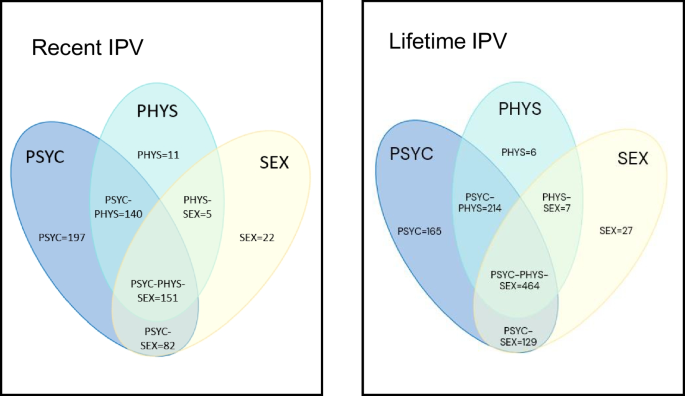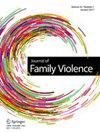亲密伴侣暴力受害后的自杀轨迹:使用结构方程模型检验女性急诊科使用者的自杀和创伤后应激障碍
IF 2.2
3区 心理学
Q1 FAMILY STUDIES
引用次数: 0
摘要
摘要目的亲密伴侣暴力(IPV)会增加自杀念头和行为的风险。尽管迫切需要增加妇女的安全和福祉,但自杀的轨迹尚未得到很好的理解,而且很少有研究测试了可能有助于改善风险分层和临床反应的重要媒介,如创伤后应激障碍(PTSD)。方法本研究使用前瞻性队列研究(2019-2020)的基线数据,研究心理、生理、性和多重IPV对自杀意念和自杀企图的差异影响,并检验这些通路是否由PTSD介导。简单的随机抽样——在澳大利亚急诊科(ED)进行在线或面对面的抽样——用于调查最近出现与自杀有关的ED症状的同意接受治疗的妇女。结构方程模型用于测试近期和终生IPV、创伤后应激障碍和自杀意念和企图之间的途径。结果参与研究的1,715名妇女(M = 30.24, SD = 11.91岁)中,1,012名(59%)报告终生暴露于IPV, 608名(35%)报告近期受害(和lt;18个月)。PTSD的存在完全介导心理、生理和性IPV对意念的影响(p <. 05)。多重IPV对构思和尝试的直接影响是独一无二的,与终生暴露相比,这些途径在近期IPV中最为一致(p <. 05)。途径分析确定了两种高危患者群体:近期多发IPV的女性和终身暴露于IPV后诊断为PTSD的女性。研究结果可用于改善有伴侣和自我导向暴力死亡风险的患者的风险预测和临床干预。本文章由计算机程序翻译,如有差异,请以英文原文为准。

Trajectories to Suicide Following Intimate Partner Violence Victimization: Using Structural Equation Modelling to Examine Suicide and PTSD in Female Emergency Department Users
Abstract Purpose Intimate partner violence (IPV) is known to increase the risk of suicidal thoughts and behaviors. Despite the urgent need to increase women’s safety and wellbeing, trajectories to suicide are not well understood and few studies have tested potentially important mediators, such as post-traumatic stress disorder (PTSD), that could help to improve risk stratification and clinical responses. Methods This study used baseline data from a prospective cohort study (2019–2020) to examine differential effects of psychological, physical, sexual, and multiple IPV on suicidal ideation and suicide attempt and test whether pathways are mediated by PTSD. Simple random sampling – online/in-person in Australian emergency departments (EDs) – was used to survey consenting women with a recent suicide-related ED presentation. Structural equation modelling was used to test the pathways between recent and lifetime IPV, PTSD, and suicidal ideation and attempt. Results Of the 1,715 women ( M = 30.24, SD = 11.91 years) who participated, 1,012 (59%) reported lifetime IPV exposure, with 608 (35%) reporting recent victimization (< 18 months). Presence of PTSD wholly mediated the effects of psychological, physical, and sexual IPV on ideation ( p < .05). Multiple IPV was unique in its direct effects on ideation and attempt and these pathways were most consistent for recent IPV, compared with lifetime exposure ( p < .05). Conclusions Pathway analysis identified two high-risk patient-populations: Women with recent multiple IPV and those with a diagnosis of PTSD following lifetime IPV exposure. Findings can be used to improve risk prediction and clinical intervention for patients living with mortality risk from partner- and self-directed violence.
求助全文
通过发布文献求助,成功后即可免费获取论文全文。
去求助
来源期刊

Journal of Family Violence
Multiple-
CiteScore
7.00
自引率
10.50%
发文量
121
期刊介绍:
The Journal of Family Violence (JOFV) is a peer-reviewed publication committed to the dissemination of rigorous research on preventing, ending, and ameliorating all forms of family violence. JOFV welcomes scholarly articles related to the broad categories of child abuse and maltreatment, dating violence, domestic and partner violence, and elder abuse. Within these categories, JOFV emphasizes research on physical violence, psychological violence, sexual violence, and homicides that occur in families. Studies on families in all their various forms and diversities are welcome. JOFV publishes studies using quantitative, qualitative, and/or mixed methods involving the collection of primary data. Rigorous systematic reviews, meta-analyses, and theoretical analyses are also welcome. To help advance scientific understandings of family violence, JOFV is especially interested in research using transdisciplinary perspectives and innovative research methods. Because family violence is a global problem requiring solutions from diverse disciplinary perspectives, JOFV strongly encourages submissions from scholars worldwide from all disciplines and backgrounds.
 求助内容:
求助内容: 应助结果提醒方式:
应助结果提醒方式:


